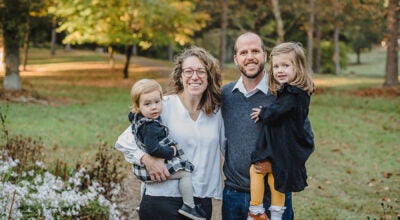Ester Marsh: Eating to lose fat
Published 12:00 am Monday, April 1, 2019
One of the hardest ideas to grasp is that you have to eat to lose fat.
I often get asked why a person doesn’t lose fat in a particular area. First of all, we can’t “spot reduce.” Second, most of the time people are eating too much — too many calories in and not enough calories burned.
If you eat 3,000 calories and you burn 2,000 calories, you obviously have 1,000 calories left. The body tries to store it first in the muscles, some organs and other tissues, but whatever is left will be stored as fat. When the amount of calories coming in is way more than the calories burned, you will gain weight.
Then again, if you are not eating enough calories when you are exercising hard, your body will not like to lose the fat. Fat is a wonderful energy source. It does not use any energy while “sitting” there, but can be used as energy.
Try to look at your body that way — when you do not put the right foods into it, the right amount of calories, it will not run very well. Most people know when they have unhealthy eating habits, such as eating a bacon and egg biscuit for breakfast, hamburger and fries for lunch, and fried chicken for dinner.
So not eating at all would make you lose fat, right? Nope! When the body does not get enough calories for the work it does, it goes in “survival mode.” It will try to use the least amount of calories possible, burning muscles for energy when necessary. Your car wouldn’t run at all if it doesn’t have gas, but our bodies try to continue to run on unhealthy food or no food.
All the ads and social media messages make it even more difficult to figure out what is best for you. I have referred many times to ChooseMyPlate.gov because it’s free and has sound information on what to eat and how much, and it works if you start recording your food intake. This site will make you aware of the foods and serving sizes you should be eating.
Typically, about 1,500 calories is needed for a woman and around 2,000 calories for a man. Of course, it changes with activity levels, age, size of the person, weight and genetic makeup, just to name a few. But the fact that your body needs good calories to function properly is a given.
Your body is your temple, and you need to take care of it. Too much unhealthy food and calories are bad; not enough calories for a body in need is also not good. And your body will try to survive and hold on to the fat and use your hard-earned muscles for energy instead.
You can sign up for free at ChooseMyPlate.gov and enter all the food you eat during the day. It will place all items eaten in the correct food groups and will show you a graph. It will show that you might eat a lot more calories than you think you are eating or actually show you that your calorie intake is below your needs.
It will even show if you do not use all your food groups (another problem).
When cutting your calories, take small steps. Remember, too much too soon makes your body go in survival mode. Cut 500 calories each day — in a week that would be 3,500 calories and it takes 3,500 calories to lose one pound. If you keep up that rate, you will lose 52 pounds in one year.
When you need more assistance, I highly recommend Weight Watchers because it teaches you how to eat real foods and to be healthy and learn portion control focusing on health and wellness rather than just losing pounds. Set reachable goals. And remember how long it took the fat to build up; it will take a while to get rid of it.
Ester H. Marsh is health and fitness director of J.F. Hurley Family YMCA.





